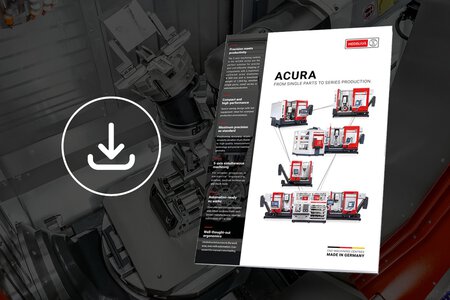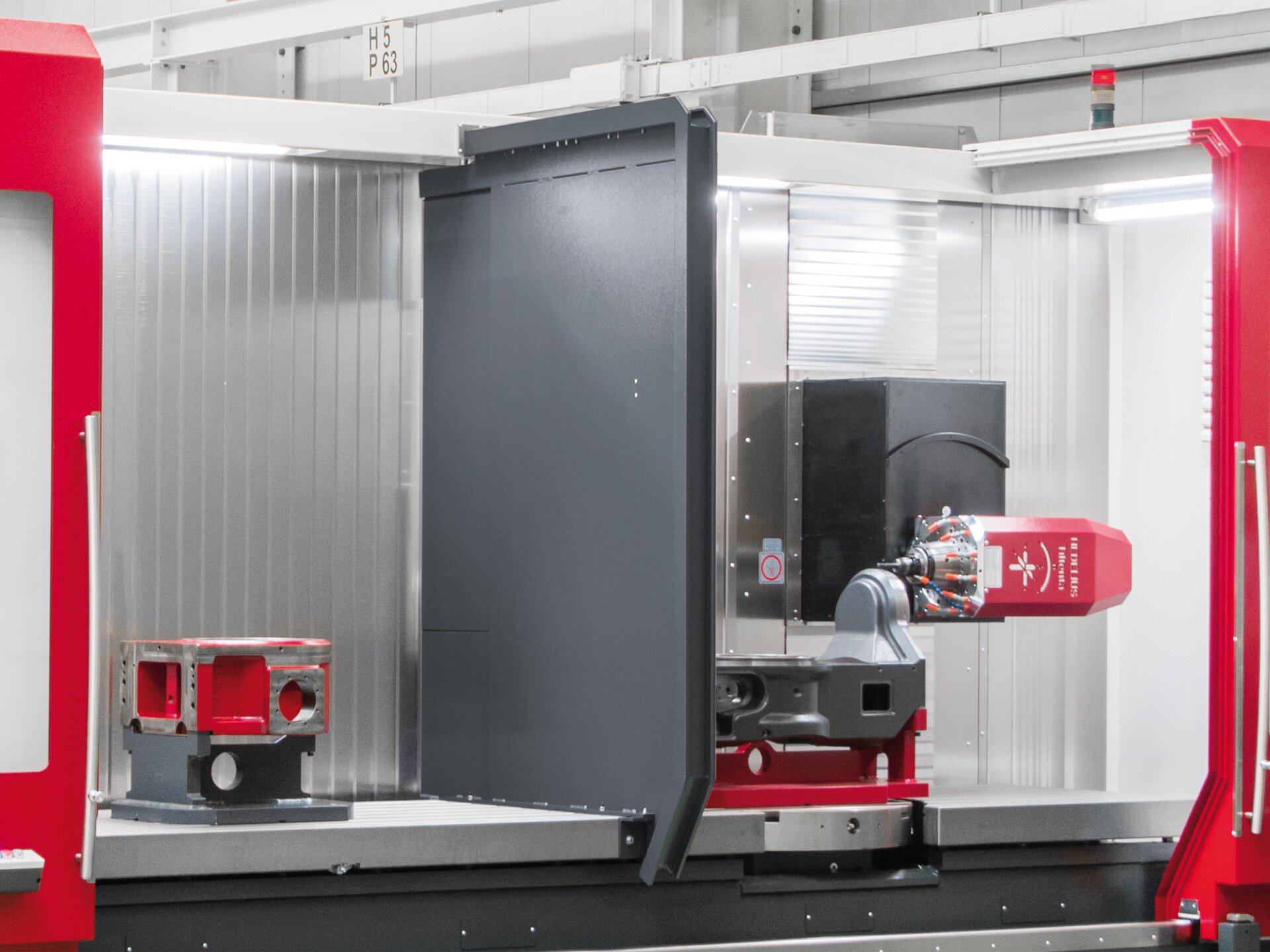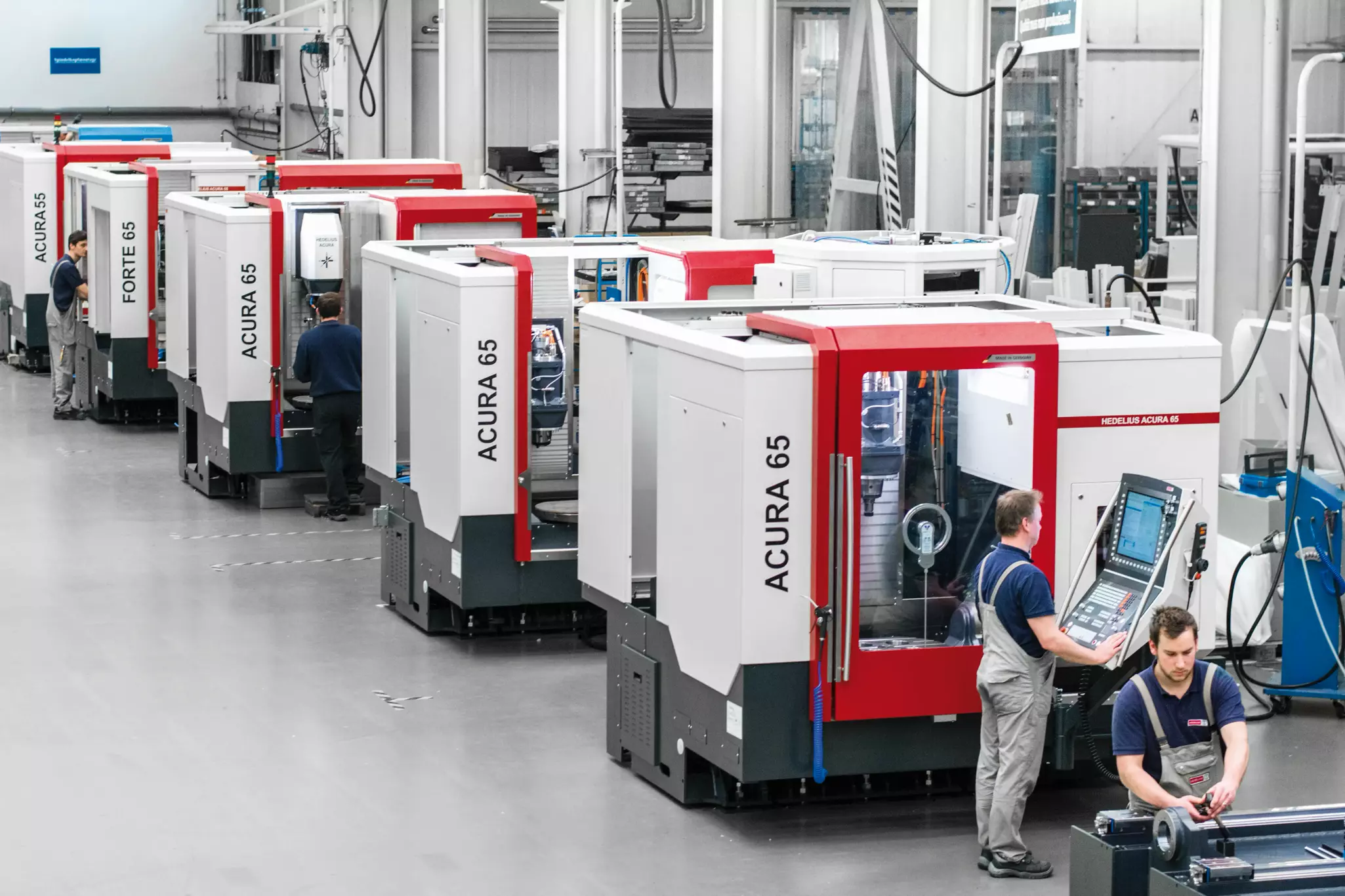05.01.2024
Maximum machining output with HEDELIUS
The choice of the optimum CNC solution depends largely on the number of pieces, batch size, running time, dimensions and weight of the workpieces to be closed. For this reason, the entire set-up process should be considered when planning a new machining centre in order to ensure that productive goals are achieved.
With the help of our wide range of optional features for tooling optimisation, we adapt our CNC machining centres optimally to your individual production requirements. This enables you to maximise spindle runtimes and thus increase output. We have already proven our expertise with more than 3,000 well-known customers across Europe.
Variants of tooling optimisation
With the help of our wide range of tooling optimisation options, you can reduce your standstill and waiting times in production. This enables you to maximise the spindle running time of your machining centre and significantly improve your productivity. Discover the tooling optimisation options that have already improved the production performance of a large number of customers.
Customer testimonials

Efficiency as the key to success
The Swabian medium-sized company has been relying on HEDELIUS for 22 years. Their latest investment in a machining centre from the TILTENTA series was also due to the extensive equipment package: In addition to a work area partition for oscillation mode, a fast tool changer, a STANDBY tool magazine with 190 places and a high-precision laser measuring system ensure a further reduction in tooling times with consistently high production quality. The TILTENTA thus also fulfils the requirements for flexibility in production and a reliably very high product quality of the workpieces.
Extreme flexibility in production
In preparation for the investment in a new machining centre, Bathon GmbH carried out an analysis of components and geometries in order to find exactly the right machine for the complex production situation. The integrated zero-point clamping system and a large tool magazine were very important factors in the decision in favour of one manufacturer. Ultimately, a HEDELIUS machining centre from the TILTENTA series was chosen and, in addition to the standard magazine, an additional STANDBY tool magazine with 180 additional tool positions was ordered.


The conversion is kept to a minimum
Due to a particularly wide range of parts, ERO GmbH wanted to invest in an automated 5-axis machining centre to enable unmanned production over an additional shift. In the end, the company opted for a HEDELIUS machining centre from the ACURA series with robot automation from BMO. At the end of the working day, the automation system is tooling again with new, different raw parts. The 6-axis robot from BMO Automation then changes the required clamping device in the machining centre and automatically inserts the workpieces at the connection.
High capacity utilisation due to oscillation mode
In view of its strategic focus on the production of complex, high-precision assemblies, the system supplier decided to purchase a TILTENTA 7-2600 in 2021. The HEDELIUS machining centre also impressed with its crossover concept. The long-bed machine can be equipped with a work area partition in a matter of minutes, for example to switch from front side processing of long workpieces to oscillating machining. This creates a 3-axis and a 5-axis work area for main time-parallel tooling.


Capacity at the machine doubled
The manufacturing possibilities offered by the compact HEDELIUS ACURA 65 EL in combination with the Indumatik Light 120 pallet automation system ultimately convinced WFT Werkzeug- und Frästechnik GmbH. In addition to single parts, the company's production portfolio also includes a whole range of recurring parts that are constantly required. During the day, single parts are produced manually on the machine according to customer orders, and production continues unmanned at night and at weekends. The connected automation system has doubled the capacity of the machine.
Series
HEDELIUS CNC machining centres are recognised throughout Europe for their precision, stability and reliability. Thanks to the extensive range of accessories, our machining centres can be adjusted to almost any machining task.
Extremely compact 5-axis high-performance machining centres with rotating/swivelling table mounted on both sides for high-precision cutting performance.

Versatile machining centres with infinitely variable swivelling main spindle and integrated NC rotary table.

Discover the FORTE series - a new class of vertical 3-axis machining centres that offer maximum precision and performance in the smallest of spaces with state-of-the-art Operator's platform design.

Arrange a consultation
We are happy to support you on the way to optimising your spindle runtime. Our experts will advise you on choosing the right machining centre. Arrange a non-binding consultation now! Use the contact form below or send us an e-mail to sales@hedelius.de.
This form requires your consent to third-party cookies. Privacy settings
Further informationMore news

We will be on company holidays from 24 December 2025 to 2 January 2026. Please note that our customer service and sales department will only be available to a limited extent during this period. We will process your enquiries as soon as possible after our return. Further information on contact options and the availability of our customer service and sales team can be found here.

(PDF | EN) Automate your HEDELIUS machining centre with the innovative RoboJob systems and increase your productivity around the clock. Whether small series, medium quantities or unmanned night production: with the Mill-Assist and Tower systems, you can work more economically, reduce downtimes and ensure the long-term competitiveness of your production. Download the free "RoboJob automation for HEDELIUS" folder now and find out how you can upgrade your machining centre to a smart automation solution in just a few steps.

Our HEDELIUS in-house exhibition on 14 and 15 May 2025 was a complete success - and we owe this above all to you! A big thank you to the numerous visitors, but of course also to our dedicated employees and our strong partners. The personal exchange with our guests, inspiring conversations and new impulses made the two days in our technology centre a real highlight.
Take a look back at this successful event with our event video and the impressions in pictures!











































































































































